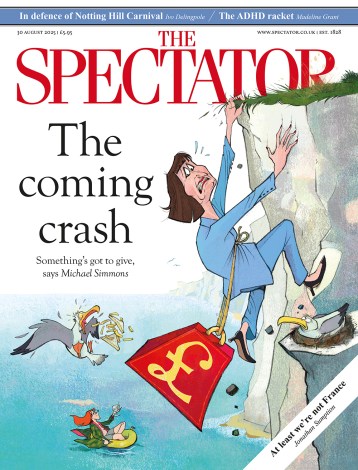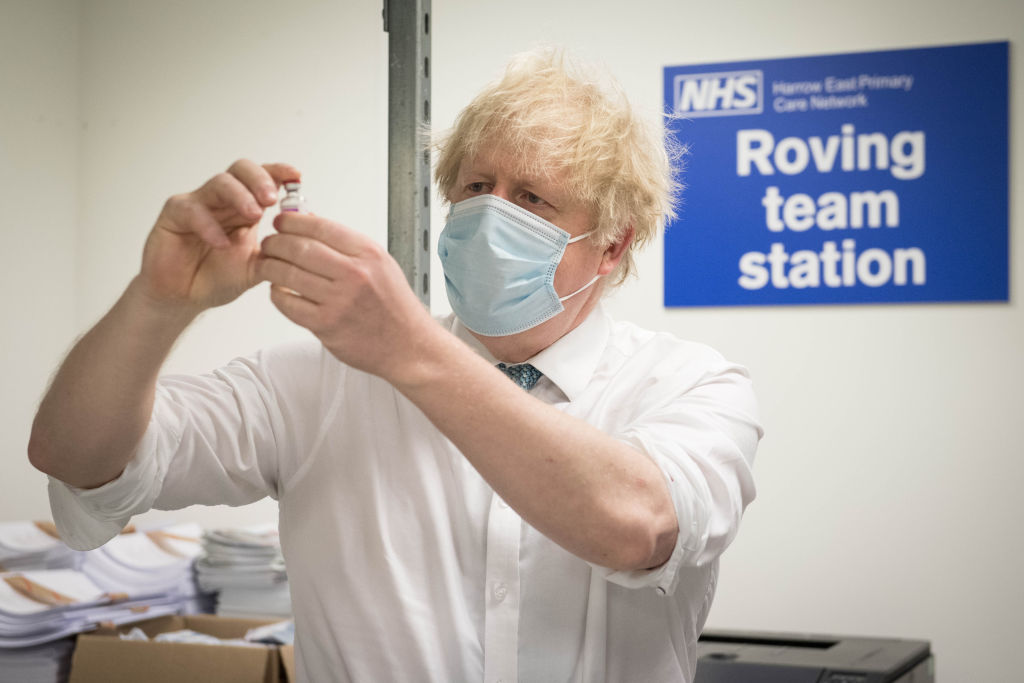Was there ever a national crisis which was so easy to solve? There are reports of supermarket shelves emptying, petrol stations running out of fuel and panic-buying. This in not unprecedented. Yet on this occasion the government doesn’t have to deal with a bolshie trade union, enter difficult negotiations with an EU which is determined to punish us for Brexit or even handle the early, unknown stages of a pandemic. All the Prime Minister has to do is to announce that the changes to the Test and Trace system already earmarked for 16 August – when fully-vaccinated people will no longer be forced to self-isolate for ten days but could be advised to get tested instead – be enacted immediately. The panic would immediately be over.
Why won’t Boris Johnson do this? Anyone would think that the Test and Trace system had actually worked. Yet according to the minutes of a SAGE meeting last September, scientific opinion was that it was then making ‘marginal’ difference to infection numbers.
There is good reason to doubt whether Test and Trace is achieving anything
It is a view which was repeated by the Commons public accounts committee in March this year, and it is hard to believe that it is any better now. The government has certainly not presented any evidence to show it is helping substantially to reduce infections. No doubt incarcerating 600,000 people a week in their own personal lockdowns helps to suppress infections to some extent, but whether we would be better ordering the people pinged by Test and Trace to self-isolate or whether we could achieve the same by ordering a random 600,000 sample of the population into self-isolating is an open question.
There is good reason to doubt whether Test and Trace is achieving anything. The manual strand of the project – the telephone-based Test and Trace service – relies on people being able to identify or remember their close contacts. That is easy enough, perhaps, if they have thrown a dinner party but impossible, say, if they have travelled on the tube. Secondly, the delays in the system make it very difficult for it to work: first, someone who develops symptoms has to be tested and the results processed. Then, their contacts have to be identified and traced. In the meantime, those contacts may have been silently passing on the infection.
As for the automated part of the system – the NHS Covid app – it suffers from a fundamental problem: it works on mere proximity, being unable to distinguish whether contact has been made indoors or outside, or even, apparently, in neighbouring houses. It is yet another one of those initiatives which gets called ‘smart’ when in fact it is really rather dim.
Why, then, is the government so wedded to Test and Trace, and so reluctant to make changes that would save us from the collapse of supply chains? Today, we are supposed to get a list of critical workers who will be exempted from the need to self-isolate, but we have already been warned that it will be very small. Everyone else will have to wait until 16 August before compulsory ten day isolation ends.
It is hard to escape the conclusion that the Prime Minister and his colleagues are simply loathe to admit that they have wasted a fortune on Test and Trace. When you have allocated £37 billion to a project it becomes difficult to confess that the money could have been spent much more wisely. Hence the government ploughs on with Test and Trace while the country grinds to a halt.







Comments